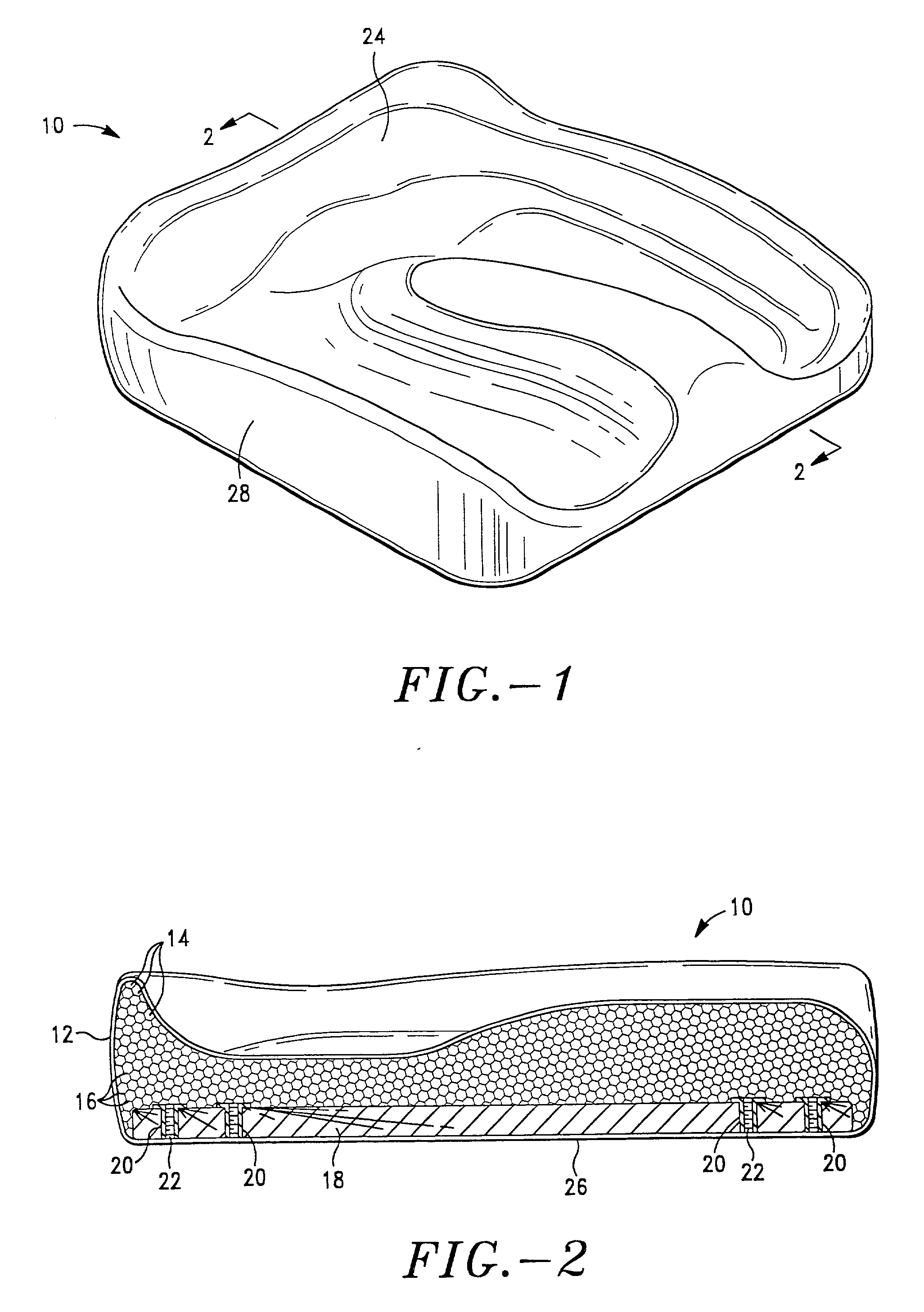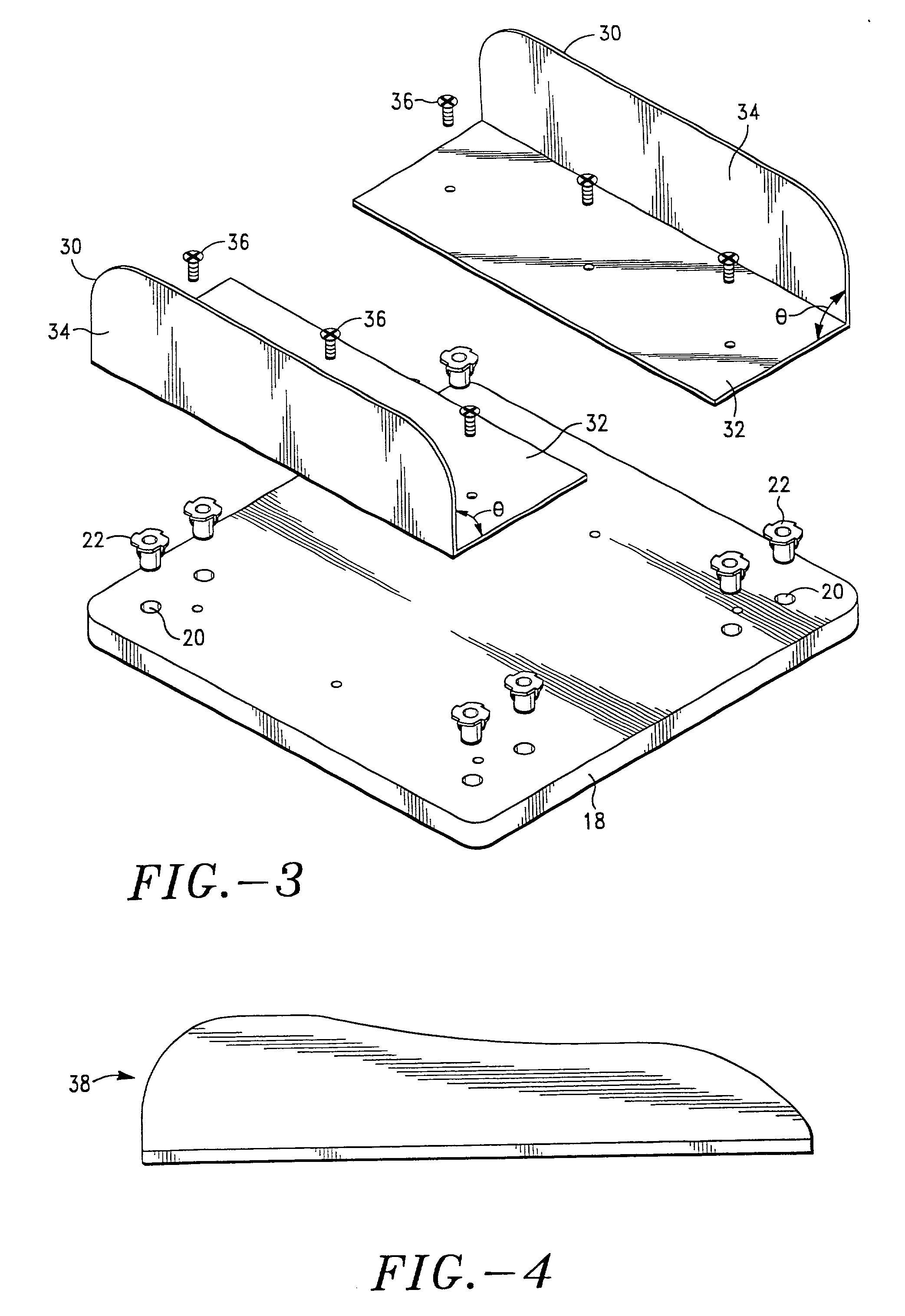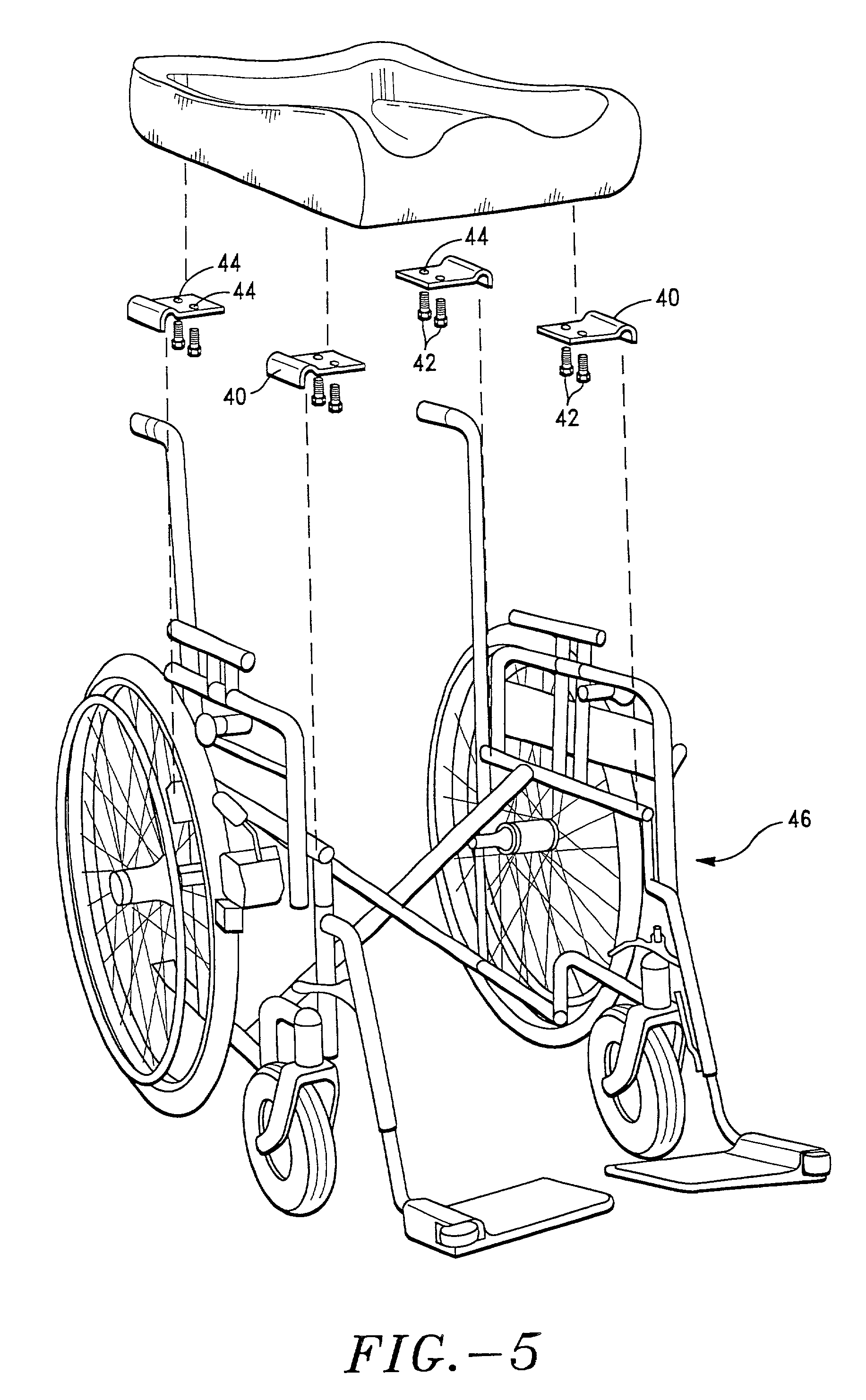Molded cushion and method of making the same
a cushion and molded technology, applied in the field of custom-made cushions, can solve the problems of laborious methods, high cost, and inability to provide a great deal of support to users, and achieve the effect of reducing labor intensity, reducing labor intensity, and reducing labor intensity
- Summary
- Abstract
- Description
- Claims
- Application Information
AI Technical Summary
Benefits of technology
Problems solved by technology
Method used
Image
Examples
Embodiment Construction
[0036] Looking to FIG. 1, a custom-molded seat bottom cushion in accordance with the present invention is generally designated by the numeral 10. Turning to FIG. 2, cushion 10 is comprised of stretchable bag 12 containing pellets 14 held in place relative to each other and bag 12 by flexible polymerized adhesive 16. In the embodiment shown in FIG. 2, cushion 10 also comprises baseboard 18, which adds structure and support to cushion 10. Baseboard 18 preferably contains baseboard holes 20 for receiving T-nuts 22, which can be used to attach various types of hardware to cushion 10.
[0037] Cushion 10 is a custom-contoured seat cushion that contains an impression unique to the user's seating surface, including indentations to accommodate any bony protrusions of the user, such as the ischium. The dimensions of top surface 24, bottom surface 26 and side surfaces 28 of cushion 10 may be customized to the specific user and wheelchair frame, as can be readily calculated by one in the seating ...
PUM
| Property | Measurement | Unit |
|---|---|---|
| thick | aaaaa | aaaaa |
| thick | aaaaa | aaaaa |
| thick | aaaaa | aaaaa |
Abstract
Description
Claims
Application Information
 Login to View More
Login to View More - R&D
- Intellectual Property
- Life Sciences
- Materials
- Tech Scout
- Unparalleled Data Quality
- Higher Quality Content
- 60% Fewer Hallucinations
Browse by: Latest US Patents, China's latest patents, Technical Efficacy Thesaurus, Application Domain, Technology Topic, Popular Technical Reports.
© 2025 PatSnap. All rights reserved.Legal|Privacy policy|Modern Slavery Act Transparency Statement|Sitemap|About US| Contact US: help@patsnap.com



